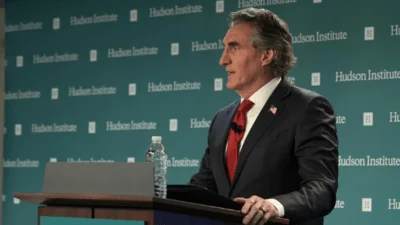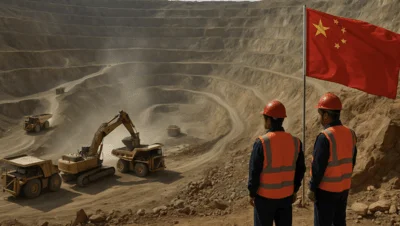At a Capitol Hill briefing on Oct. 21 hosted by the National Coalition for Energy Analytics (NCEA), a panel of mining and energy experts joined Sen. Mike Lee (R-UT) to issue a stark warning about the global mining industry’s trajectory—particularly the mounting threat of a copper shortfall and China’s growing control over critical minerals supply chains.
The panel painted a sobering picture. According to an NCEA report, the average time from concept to production for a new mining project in the United States is 29 years—the second slowest in the world, behind only Zambia, according to an S&P Global study.
That regulatory lag, the panel argued, is undermining Western energy independence. “Permitting reform is not just about mining—it’s about power lines, generation, and the entire energy ecosystem,” said Peter Bryant, NCEA Advisory Board member and Chairman of Clareo and the Key Minerals Forum.
Senator Lee said the need for reform is urgent, and tied the issue to his REINS Act, a bill that would require congressional approval for any federal regulation with an economic impact exceeding $100 million. “China is something that makes OPEC look like a Sunday picnic list by comparison,” Lee said, urging a reexamination of federal permitting and rulemaking structures that slow domestic mining investment.
Brandon Craig, President of BHP Americas, warned of a coming “10 million ton copper shortage by 2035,” calling for structural change before the shortfall cripples the global economy. “Prices are a signal for investment,” he said, “but copper prices haven’t moved in a way that will change investment behavior.”
Mining executives noted that most easily accessible copper deposits are already tapped, forcing the industry deeper underground, driving up both costs and complexity. According to Freeport-McMoRan, a recent accident at one of the world’s largest copper mines could already put near-term supply at risk.
Copper is indispensable for modern infrastructure — including electric vehicles, solar panels, and wind turbines — making the projected shortfall a direct threat to clean energy goals and industrial stability.
The NCEA report’s most alarming findings center on China’s strategic control of critical mineral supply chains. Though copper is mined globally, over half of all refining occurs in China, where the government’s expansion of processing capacity — often with no conversion fees for smelting — has effectively crushed international competition.
The report states that “China’s control over a critical mineral such as lithium processing similarly gives it powerful leverage over global pricing, enabling it to flood the market during periods of oversupply, driving down prices so far that it makes it challenging, if not impossible, for Western or allied midstream projects to attract financing.”
This “complex playbook,” as Bryant described it, allows Beijing to manipulate markets mineral by mineral. The Epoch Times quoted him as saying that China “has a very complex playbook where they have a choke point on each mineral in a different way.”
The NCEA report concludes that China’s dominance in critical minerals now constitutes a national security risk, and that the Western model — “high-cost, high-regulation, slow-moving, and undercapitalized” — cannot compete with the speed and financing leverage of Chinese operations.
For policymakers like Lee, the solution lies in rethinking how the U.S. regulates and finances domestic mining. “If we want to decouple from China and sustain energy security, we need a permitting framework that works,” he said.
Bryant echoed the call, noting that even if the U.S. were to accelerate mining investment, new projects would take decades to come online. “There haven’t been significant innovations in copper mining in 40 years,” Rao noted. “We’re fighting 21st-century challenges with 20th-century tools.”
The panel included Peter Bryant, NCEA Advisory Board member and Chairman of Clareo and the Key Minerals Forum; Brandon Craig, President of BHP Americas; and Satish Rao, Managing Director of Clareo. Together, they unpacked findings from NCEA’s latest report, “Critical Minerals Forecast: Energy, Industry, and Geopolitical Risk.”









